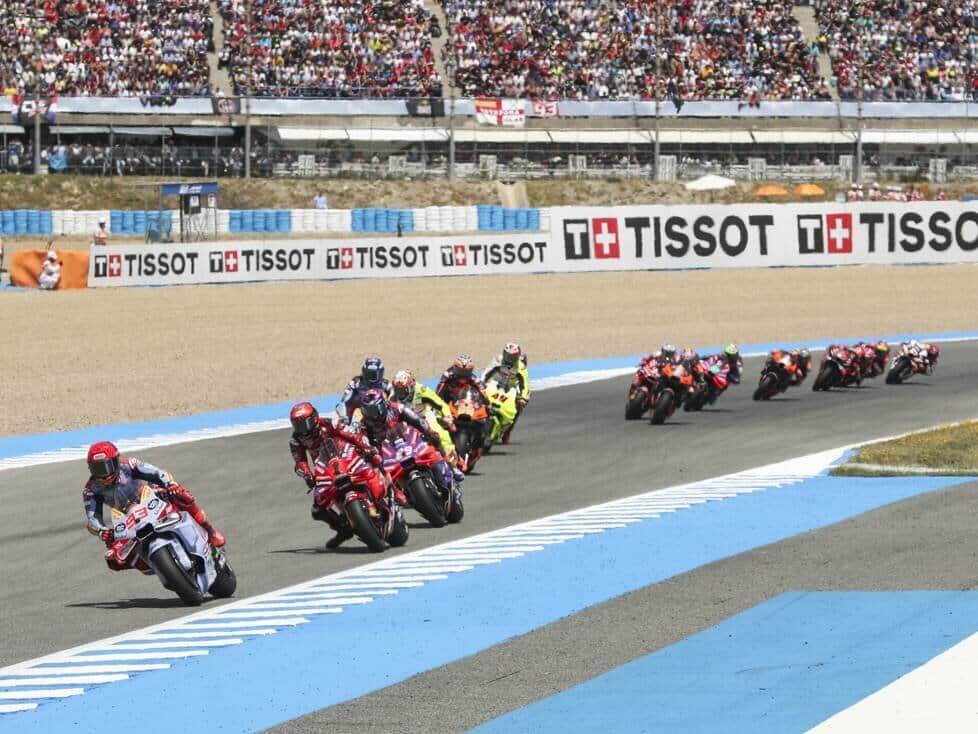MotoGP is finalizing its rules from 2027: engine displacement will be reduced, devices are history and there will also be cuts to aerodynamics
The MotoGP Grand Prix Commission confirmed the new set of rules for 2027 on Monday. This will be accompanied by a reduction in engine capacity from 1,000 to 850 cc. This was agreed by the championship in collaboration with the manufacturers, along with a number of other important points.
The proposal to downsize the engines for the first time since 2007 was driven by the need to reduce the speeds of the bikes to improve safety on many of the series’ current tracks.
MotoGP has been using 1000cc engines since 2012, having switched to the much-maligned 800cc regulations in 2007. Before that, between the start of MotoGP’s new four-stroke era in 2002 and 2006, the displacement was 990cc – replacing the 500cc era with two-stroke engines.
Another important change to the rules for 2027 is the reduction in aerodynamics. This is because aerodynamic development has become a major battleground in MotoGP in recent years, although this push has generally had a negative effect on the racing spectacle.
This is being brought under control by reducing the allowable sizes for the front part of the aero body. Any parts added to the rear of the bike must be homologated as part of the overall aero body. One aero update per season is also allowed in the new regulations
All ride height devices, including holeshot devices for the start, will be banned. In 2024, the ride height device for the front wheel had already been banned.
Concession system remains in place
Minor changes include reducing the number of engines from seven to six for 20 races and from nine to seven for 21 to 22 races. The minimum weight of the motorcycles will be reduced from 157 to 153 kilograms, the tank capacity from 22 to 20 liters in the Grand Prix and from 12 to 11 liters in the Sprint.
The concession system reintroduced for 2024 will also be retained in 2027, with all manufacturers competing in 2026 starting the new rule cycle as a Category B brand.
This means that engine development is frozen, three wildcards can be used per season, no testing with regular drivers is allowed during the season and a total of 190 tires are available for testing.
Each new manufacturer entering in 2027 will start in Category D and have free engine development and testing with race drivers as well as six wildcards and 260 test tires.
A manufacturer’s rank will be re-evaluated mid-season.
One previously announced element of the rules for 2027 will be the use of 100% sustainable fuels. The first steps in this direction have already been taken this MotoGP season with the introduction of fuels consisting of 40 percent non-fossil materials.
BMW possible new entrant for 2027
The last major technical overhaul of the MotoGP regulations took place in 2016 with the introduction of standardized electronics, which was intended to reduce the gap between the all-dominant Japanese manufacturers and the rest of the field.
This ultimately helped to increase the presence of the manufacturers in MotoGP. Suzuki and Aprilia returned to the series in 2015 and KTM joined in 2017.
Since 2016, all three manufacturers have won races, while Ducati – which also benefited from the rule change after years of drudgery – has become the dominant force in MotoGP and provided the 2022/23 world champion.
In recent weeks, BMW has not ruled out the possibility of entering MotoGP in the coming years, with the 2027 rule change seen as a gateway. However, the brand has not yet committed itself and emphasizes that it has not been involved in the rule discussions.





